The Kosciuszko Bridge is one of New York City’s most essential pieces of infrastructure, the hyphen in the Brooklyn-Queens Expressway that connects the two boroughs over Newtown Creek, the 3.5 mile creek which empties into the East River.
The bridge is interestingly named for the Polish national hero Tadeusz Kościuszko who fought during the American Revolution, then attempted to bring a similar revolutionary spirit to his home country, leading to the doomed Kościuszko Uprising of 1794.
Kościuszko, the man, is a revered historical figure. The bridge, however, has not always been loved. And many non-Polish people even struggle to pronounce its name, inventing a half-dozen acceptable variants.
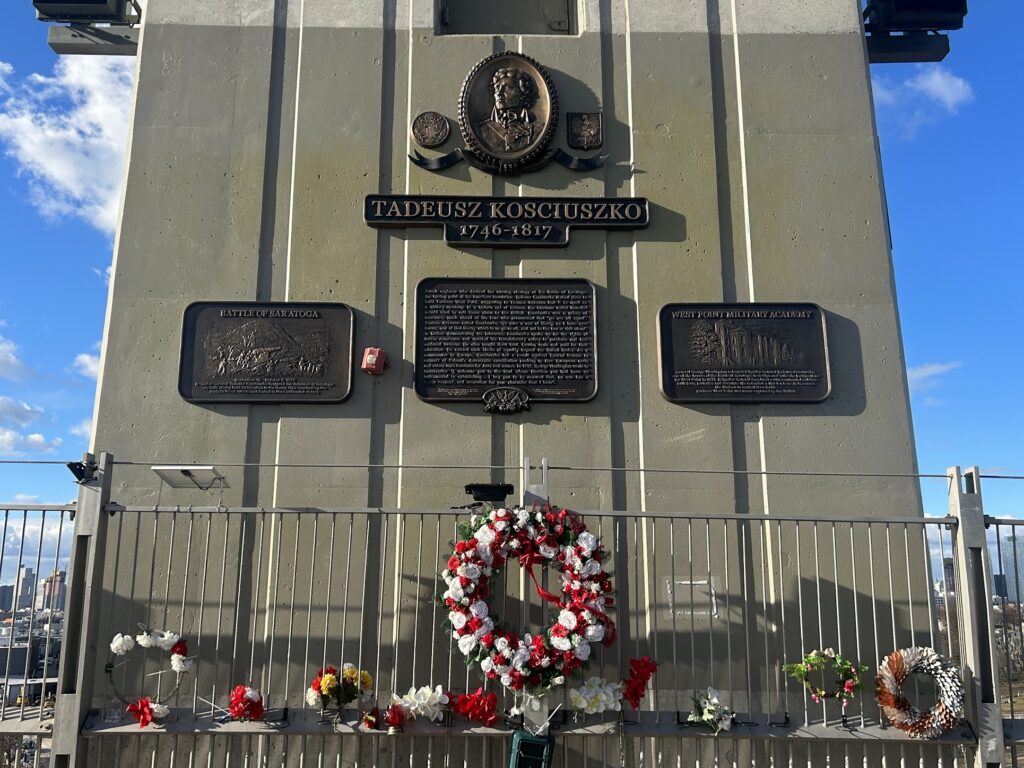
The original Kosciuszko Bridge was not exactly beloved by drivers, vexed by its inadequate handling of traffic and its poor roadways. Its glorious replacement, installed in two phases in 2017 and 2019, lights up the night sky — and the filmy waters below.
In this episode, Greg tells the entire story — of both the man and the bridge. But it’s also a story of Newtown Creek, the heavily polluted body of water which runs beneath it. How did this once placid creek become so notoriously filthy? And how did the most prominent bridge over that waterway become associated with an 18th century hero?
PLUS The return of Robert Moses!
LISTEN NOW — Kościuszko: The Man. The Bridge. The Legend.
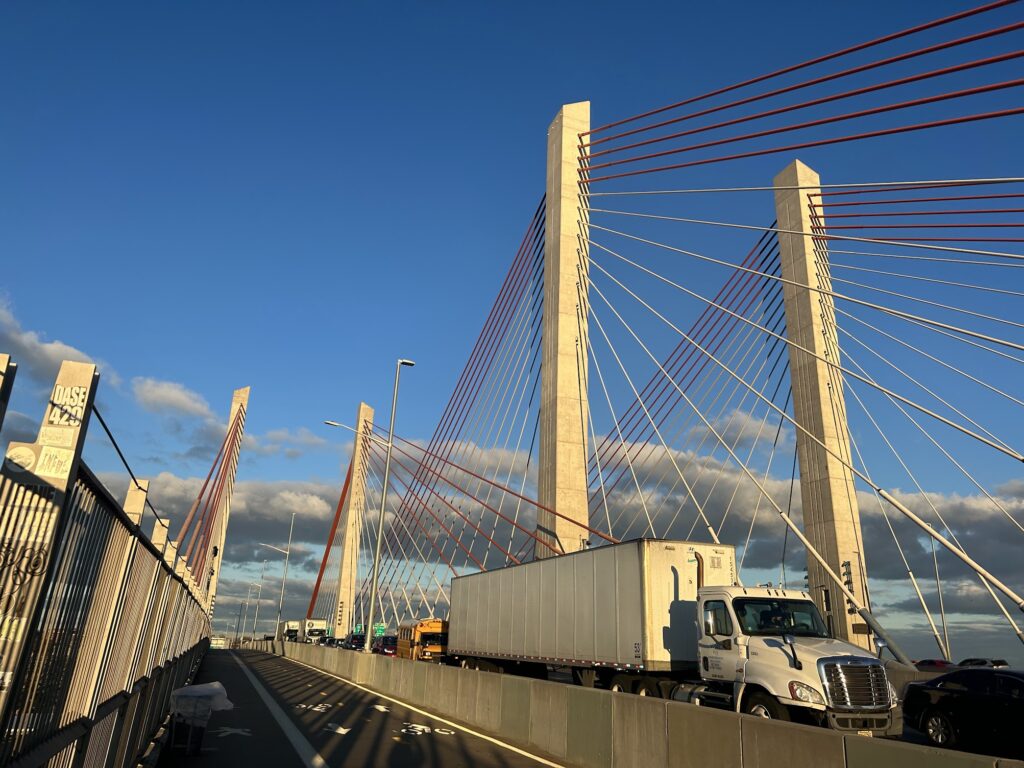
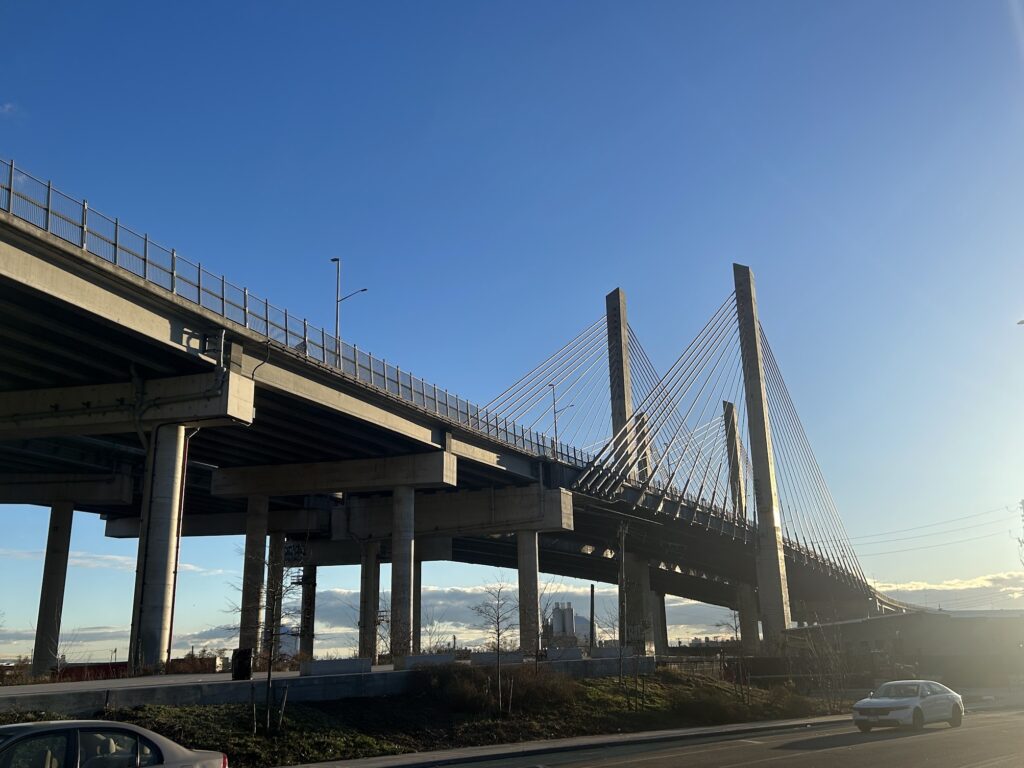
Interesting views from the bridge — of Newtown Creek and Calvary Cemetery.
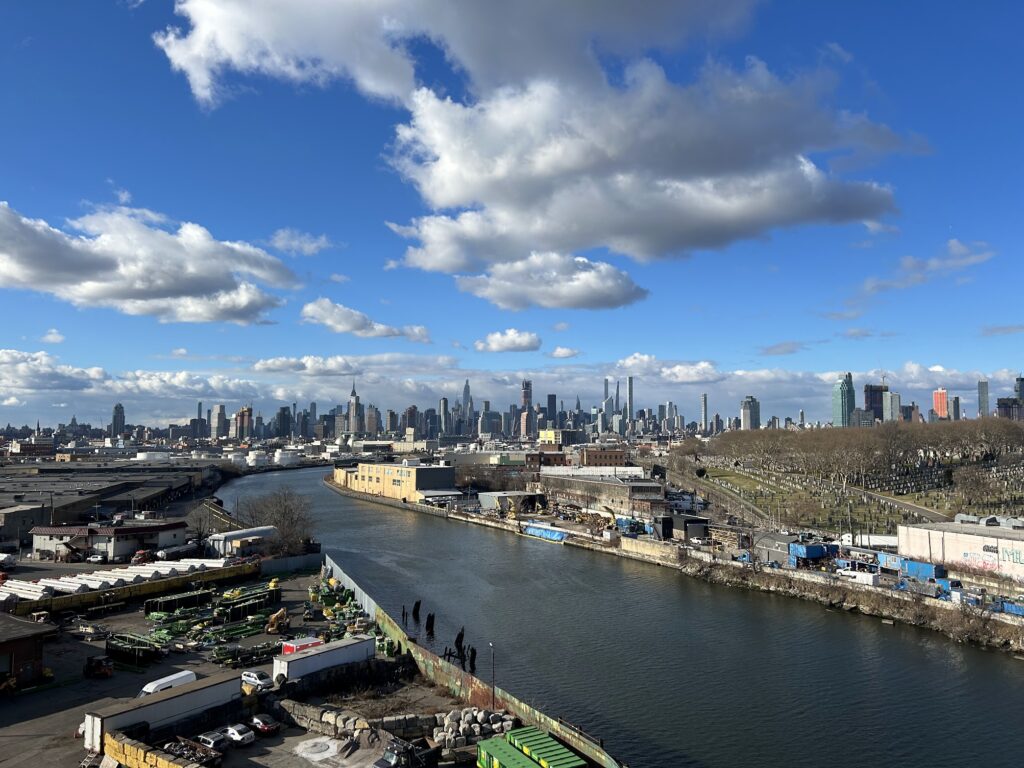
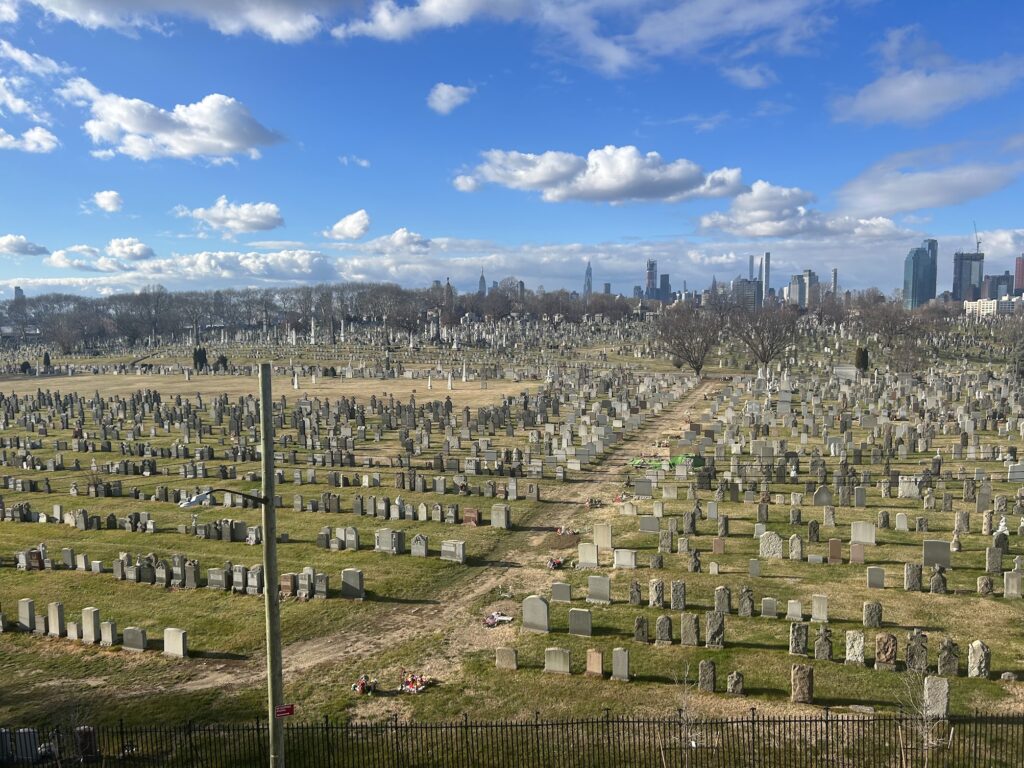
From the new Kosciusko Plaza at the Brooklyn entrance to the bridge.
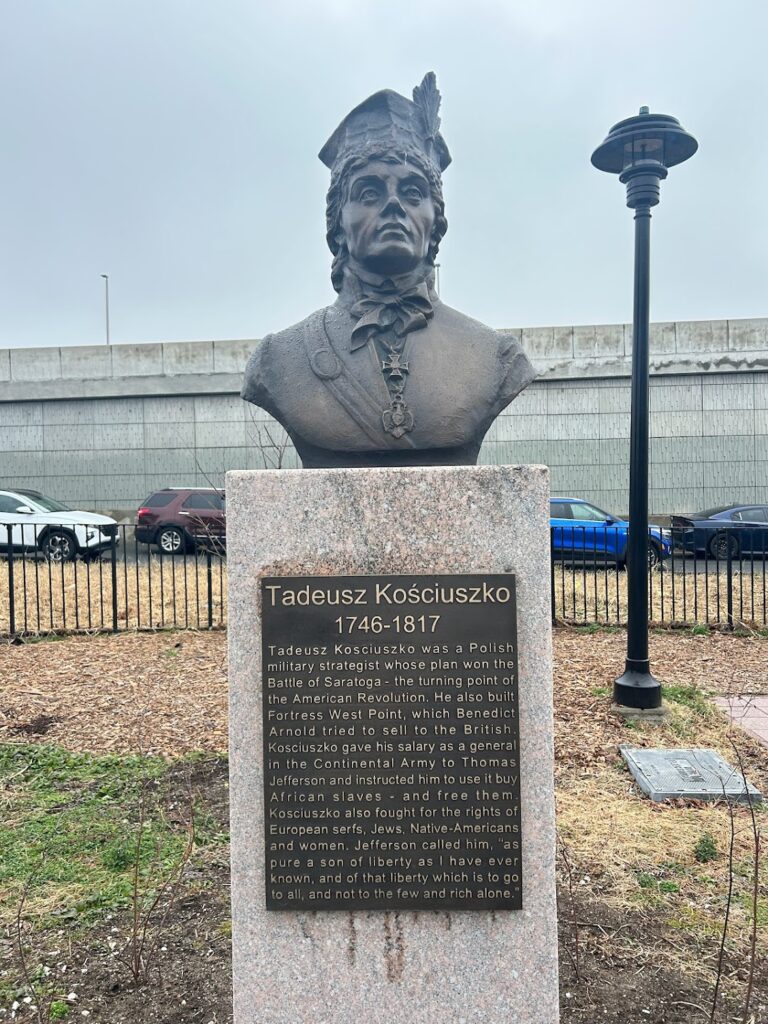
View of the bridge from the site of the old Penny Bridge/Meeker Avenue Bridge.
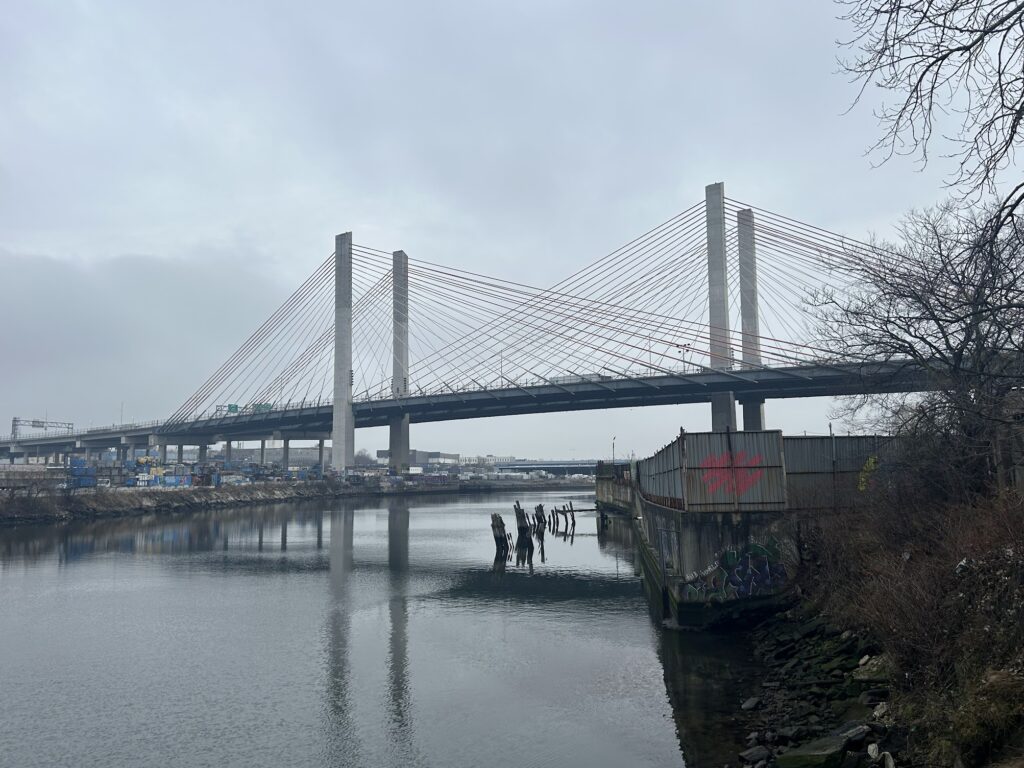
Penny Bridge marker in need of some maintenence.
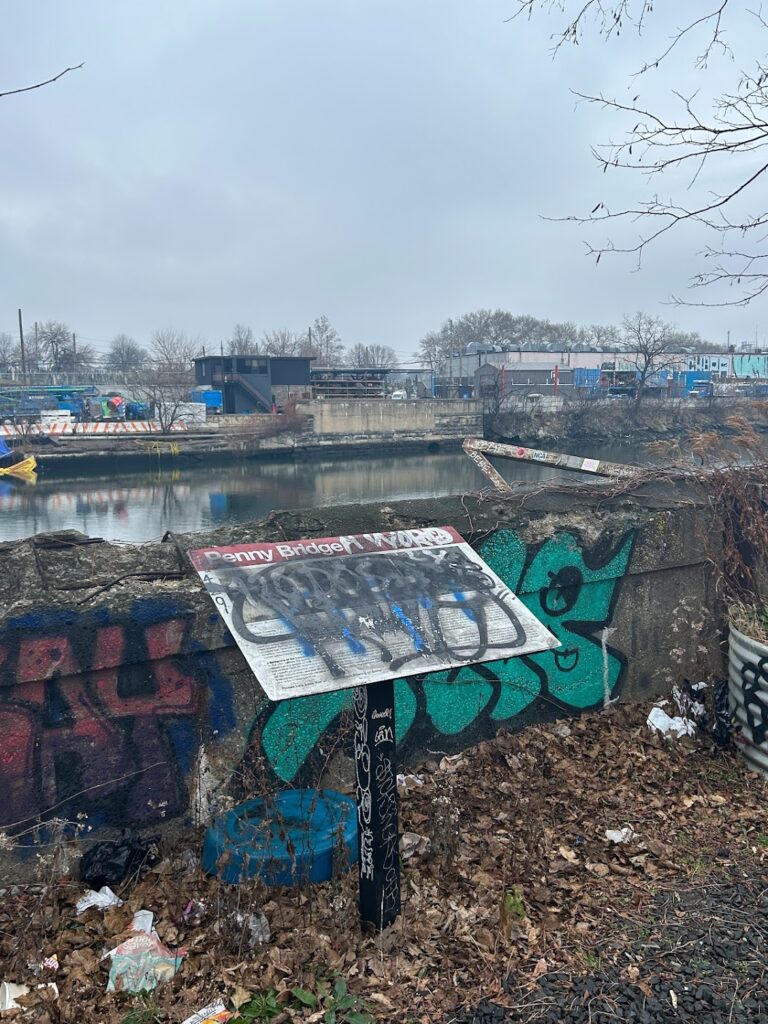
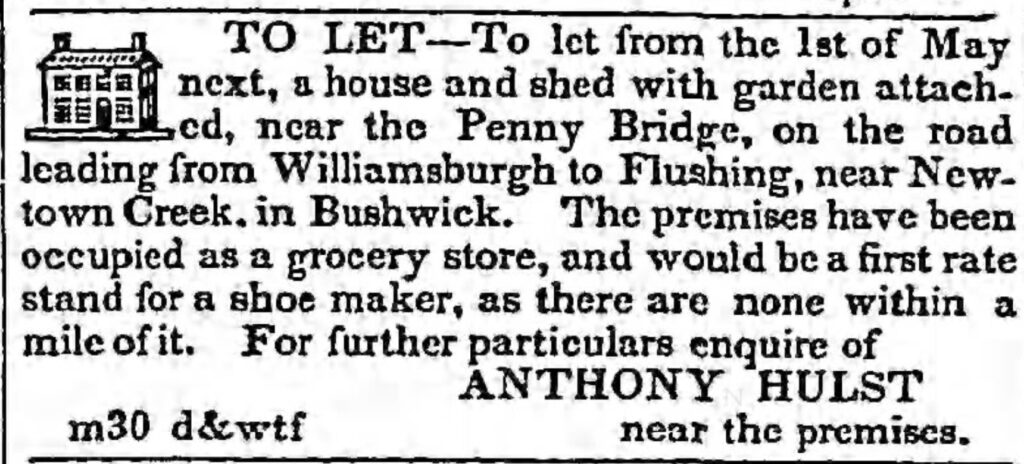
FURTHER LISTENING
FURTHER READING
The New York Times article which ran August 24, 1939, one week before Hitler invaded Poland
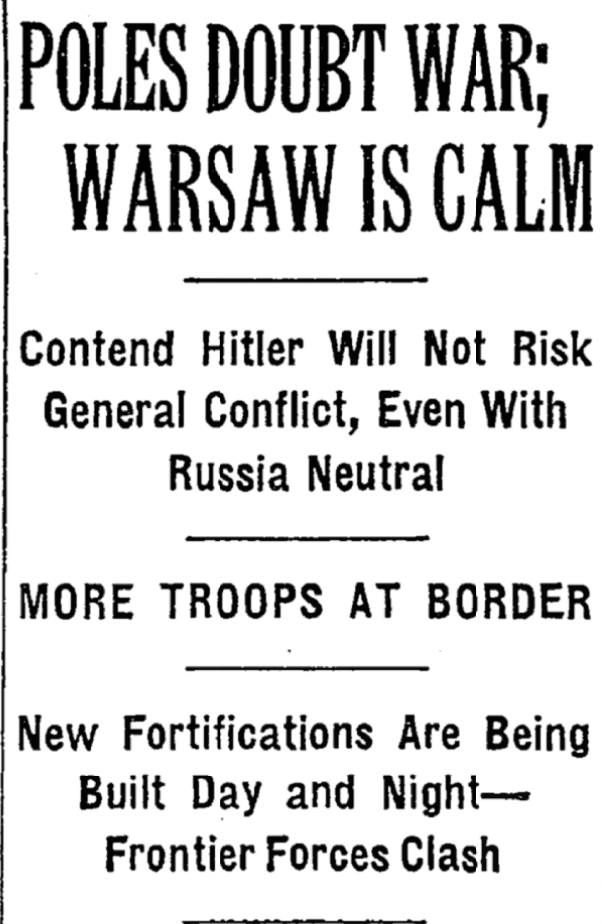
“Men Eager and Women, Dressed In Black, Are ‘Ready To Fight’ For Their Homeland,” Brooklyn Daily Eagle, September 1, 1939
“Span Repaving Poses Questions,” Greenpoint Weekly Star, Maerch 28, 1958
“A Gray Puff, and the Old Kosciuszko Bridge Is No More,” New York Times, Oct 1, 2017
“How Do You Pronounce Kosciuszko? It Depends on Where You’re From,” New York Times, April 28, 2017
“At Bridge, 4 Arrests but No Leap Year Jump,” New York Times, March 1, 2000
This podcast was based on this article written for this website several years ago:
“That sound that crashes in the tyrant’s ear – Kosciuszko!” Lord Byron was talking about Polish hero Tadeusz Kościuszko, who was (most likely) born on this date in 1746. Tomorrow a new bridge bearing his name will open to the public, hoping to eliminate the many grievances of those stuck upon its predecessor during rush hour.
But how did the original 1939 span over the Newtown Creek, connecting Brooklyn to Queens, get named the Kosciuszko Bridge in the first place?

Kosciuszko wasn’t just Poland’s most famous revolutionary. In 1776, he sailed for America to fight alongside George Washington and the Continental Army. He was a brilliant strategist and engineer, helping bolster many American forts, and was greatly admired by Washington’s generals.
In one of his more clever displays, the man who would one day have a bridge named after him actually blew up several bridges to hamper British advances in upstate New York.**
After the war, he returned to Europe and led the fight for Poland’s independence (although his storied uprising against Russia was ultimately a failure).
Kosciuszko died in 1817 and has been celebrated the world over as the greatest of revolutionaries and perhaps the best known historical figure in Polish history. But that alone doesn’t get one a bridge in Long Island.
The new automobile bridge, eventually part of the Brooklyn-Queens Expressway, was completed in 1939, replacing a smaller one called the Meeker Avenue Bridge.
The new crossing opened in August. Germany invaded Poland nine days later.
The approach to the Kosciuszko Bridge, photographed in 1939 by the Wurts Brothers. Photo courtesy the Museum of the City of New York

New York City’s affinity with Poland was strong by this time. The city had thousands of Polish-Jewish residents.
The Polish pavilion at the 1939-40 World’s Fair in Flushing-Meadow was among the most striking, featuring a bold statue of the Polish monarch Wladyslaw Jagiello. (That statue was eventually moved to Central Park, where it sits today near the Turtle Pond.) Its powerful, war-like stance resonated with New York’s Polish immigrants, watching the destruction of their native country and its people from afar.
Below: Construction of the new Meeker Avenue Bridge in June 1939, later to be named Kosciuszko. (Courtesy NYC Municipal Archives)

In July 1940, the Meeker Avenue Bridge was renamed the Kosciuszko Bridge, as a sign of the revolutionary spirit that bonded America and Poland. It certainly made sense given that the Brooklyn anchorage rises from Greenpoint, a vibrant Polish neighborhood.
At an official ceremony on September 23, 1940 — a year after the German invasion — thousands of Polish-Americans cheered along to a rousing patriotic speech by Mayor Fiorello La Guardia. On either side of the bridge were parades featuring revelers in traditional Polish costumes.
Below: An image of the renaming ceremony, the bridge adorned in American flags. Courtesy New York State
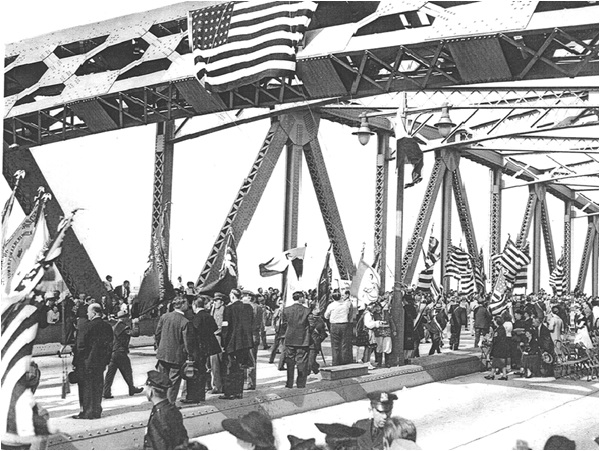
“[I]n so far as the American people and the American government are concerned,” said La Guardia, “the free government of Poland still lives and will continue to live.”
The crowd roared with applause at the mention of President Franklin D. Roosevelt. America would not be officially engaged in World War II until the following year with the attack on Pearl Harbor.
Ah, but that name! It remains one of the more perplexing bridge names to say. It’s correctly pronounced kohsh-CHOOSH-koh, although several slight variations are accepted.
At first, many people simply refused to say it. In 1945, the New York Times mentioned that “Kosciuszko Bridge the people will not have and they call it the Meeker Avenue Bridge to this day.”
Of course, many people preface the name today with an expletive, as the original bridge is better known for its traffic entanglements and its lack of any kind of shoulder for stalled cars. There have been plans for years to replace the bridge, plans which finally came to fruition this week with opening of the second span of the newly designed bridge.
The Kosciuszko’s younger brother bridge — the Pulaski Bridge, named for another Polish hero, Kazimierz Pulaski — spans the same body of water just a couple miles to the west.
**Tadeusz Kościuszko actually blew up and booby-trapped many bridges during the Revolutionary War on the command of Colonel Philip Schuyler, the father-in-law of Alexander Hamilton.

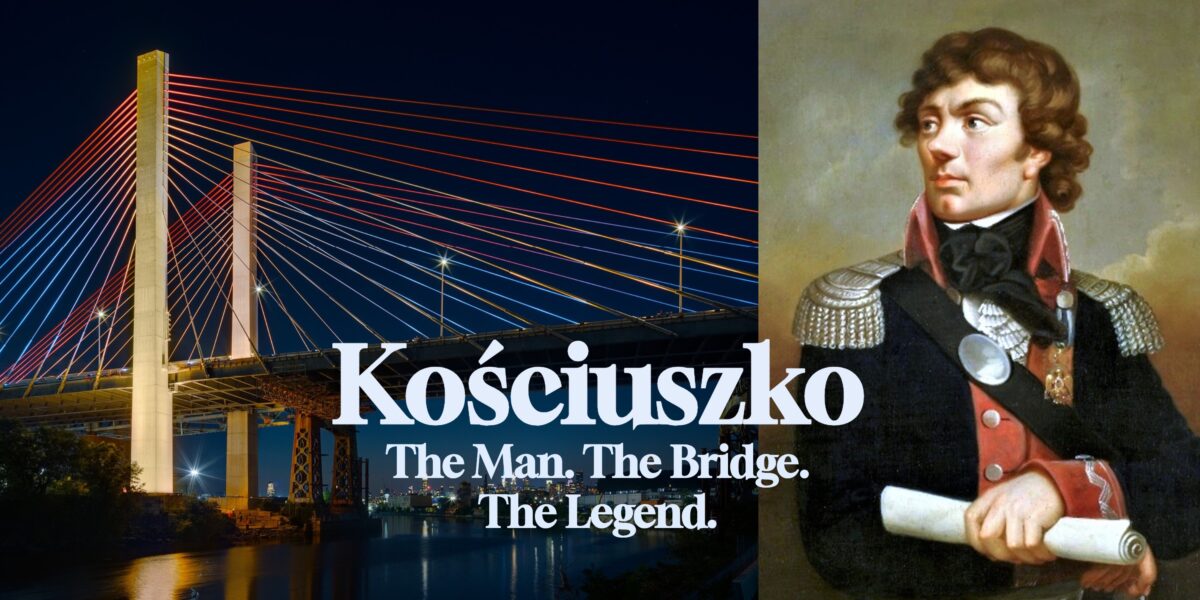
3 replies on “Kosciuszko! The Man and the Bridge: A Thrilling Tale of Revolution and Pollution”
I love this bridge – especially the specific sound tires make driving over it. The view was always grand though completely industrial and smelly, been using it since late 60s, when industry was at full capacity and you could never tell if it was sunny out or not because of the pollution. Hope it’s nicer there now, but many fond memories crossing it with my father endure. thank you, my friends.
We have a Kosciusko Bridge upstate on I-87 Northway over the Mohawk River north of Albany. Most people call it the Twin Bridges. https://friendsofalbanyhistory.wordpress.com/2018/09/08/why-is-the-twin-bridge-on-the-northway-over-the-mohawk-river-named-after-a-polish-guy/
The foul odor emanating from the Newtown Creek (especially on a hot, humid summer’s day), was a daily accompaniment to my childhood in Williamsburg in the 1960’s. Back then it was just “the CREEK,” and the name of the Revolutionary War hero was pronounced, “KOS-KEY-OS-CO”! Drivers loved to complain about the bridge and the BQE, which tore right through our neighborhood. The old bridge will ever be a fixture in my memory of that particular, much-loved corner of Brooklyn!
Excellent episode! Thanks!